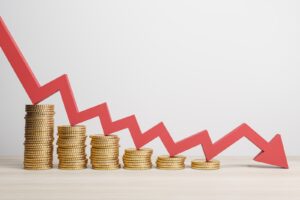
We are halfway through 2025, and the economical air seems to thicken with the news of a potential recession that is already upon us. With several economic uncertainties looming over us like inflationary pressures, geopolitical tensions, along with shifts in consumer behavior, all of them are influencing market sentiment.
What is essential right now is to understand the leading indicators that can help predict economic trends is essential for consumers, investors, and policymakers alike. In this blog, we’ll delve deeper into five critical indicators to monitor in the second half of 2025, providing context on their significance and how to interpret them effectively.
1. Gross Domestic Product (GDP) Growth Rate
What to Watch:
The GDP growth rate measures the overall economic output of a country. As of mid-2025, the U.S. economy has shown signs of slowing growth, with the GDP growth rate hovering around 1.5%, down from 2.1% in early 2025. This deceleration raises concerns about potential economic contraction.
How to Read It:
- Positive Growth: A GDP growth rate above 2% is typically considered healthy for the U.S. economy. However, if growth continues to fall, it may signal potential economic troubles ahead.
- Negative Growth: Two consecutive quarters of negative GDP growth often signal a recession. In 2025, analysts are closely monitoring quarterly reports for any signs of contraction.
Additional Insights:
Analysts are also examining the contributions of various sectors, such as technology and manufacturing, which have faced challenges due to supply chain disruptions and rising costs.
2.Unemployment Rate
What to Watch:
The unemployment rate is a lagging indicator that reflects the percentage of the labor force that is unemployed but actively seeking work. As of mid-2025, the unemployment rate has remained relatively stable at around 4.2%. However, there are signs of rising layoffs in certain sectors, particularly in technology and retail.
How to Read It:
- Low Unemployment: Generally, an unemployment rate below 4% indicates a tight labor market. However, a sudden spike in claims for unemployment benefits could suggest businesses are cutting back on hiring.
- Rising Unemployment: A sustained increase in unemployment (e.g., rising above 5%) can signal economic distress. The recent uptick in layoffs could be an early warning sign.
Additional Insights:
The U-6 unemployment rate, which includes underemployed and discouraged workers, currently sits at about 7.5%, highlighting hidden labor market challenges.
3.Consumer Confidence Index (CCI)
What to Watch:
The CCI gauges consumer sentiment regarding the economy and personal financial situations. As of mid-2025, the CCI has dropped to 95, down from 105 earlier in the year, indicating growing pessimism among consumers.
How to Read It:
- High Confidence: A CCI above 100 suggests consumers are optimistic, which typically leads to increased spending, fueling economic growth.
- Low Confidence: A CCI below 80 indicates pessimism, often resulting in reduced consumer spending, which can slow down economic activity and trigger a recession.
Additional Insights:
Factors contributing to declining confidence include rising inflation, higher interest rates, and concerns over job security, all of which could impact consumer spending in the second half of 2025.
4.Manufacturing Activity
What to Watch:
The Purchasing Managers’ Index (PMI) is a critical indicator of manufacturing activity. As of mid-2025, the PMI has fallen to 48, indicating contraction in the manufacturing sector for the first time in over a year.
How to Read It:
- Expansion: A rising PMI signals robust manufacturing activity, often correlating with economic growth. A PMI above 50 indicates expansion.
- Contraction: A declining PMI below 50 can indicate a slowdown in production and may precede broader economic downturns. The recent drop suggests that manufacturers are facing challenges such as supply chain issues and rising costs.
Additional Insights:
The ISM Manufacturing Index has also reported declining new orders and inventory levels, further indicating potential economic weakness in the manufacturing sector.
5.Stock Market Trends
What to Watch:
While stock market performance is not a direct economic indicator, it reflects investor sentiment and expectations about future economic conditions. As of mid-2025, major indices have experienced significant volatility, with the S&P 500 down approximately 10% from its peak earlier in the year.
How to Read It:
- Bull Market: Rising stock prices generally indicate investor confidence and expectations of economic growth. A sustained bull market can stimulate consumer spending and business investment.
- Bear Market: A significant decline in stock prices (typically a drop of 20% or more) can signal growing concerns about economic stability, which may lead to reduced consumer and business spending. The current market volatility suggests that investors are wary of potential economic headwinds.
Additional Insights:
Investors are closely watching corporate earnings reports, which have shown mixed results, reflecting the impact of rising costs and changing consumer behavior.
Conclusion
As we progress through the second half of 2025, monitoring these five leading indicators will be crucial for understanding the economic landscape. While headlines may alarm us with recession talk, a nuanced understanding of these indicators will empower consumers, investors, and policymakers to make informed decisions. Economic cycles are a natural part of the financial landscape, and being proactive in interpreting these indicators can help navigate potential challenges ahead.



